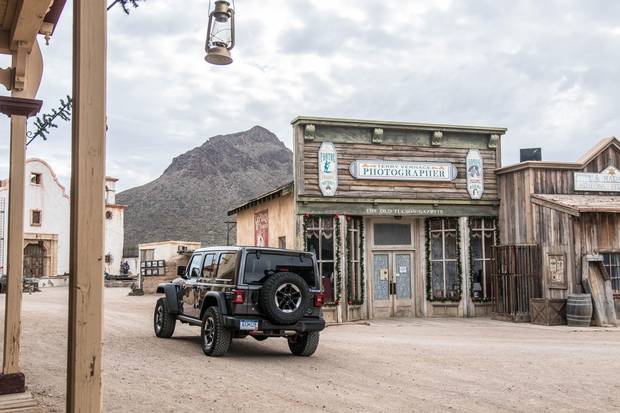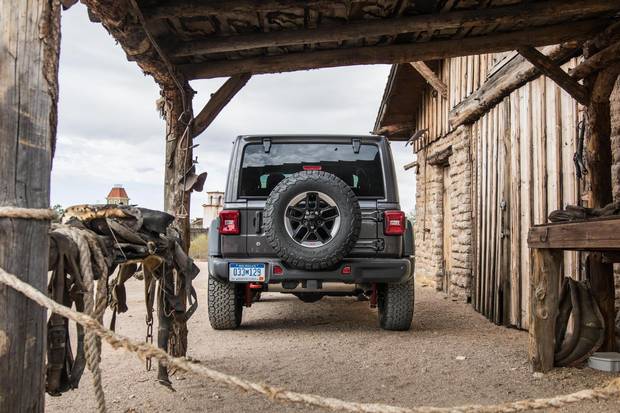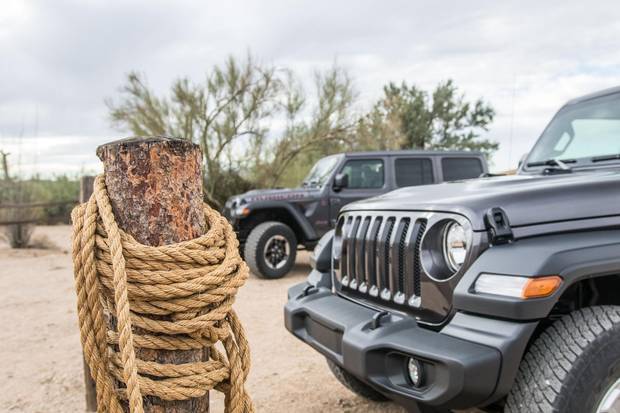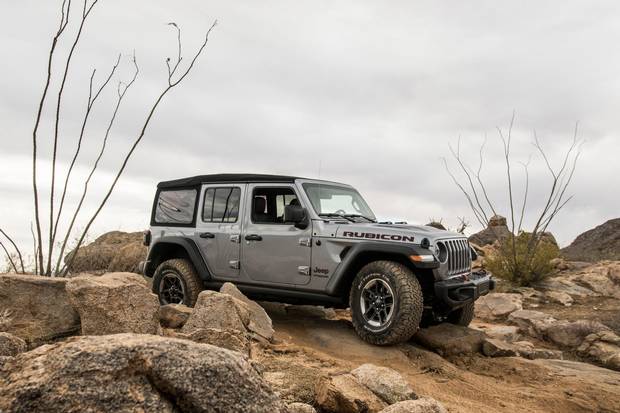A shovel. An axe. A Jeep. Sometimes the most basic tool is the only thing for the task at hand, be the job digging a ditch, felling a tree or defeating the massed forces of the Third Reich.
Since 1941, the Jeep has been the choice of those who would go out and fight for their freedom. First, it was a military pack-mule; next, the sword was beaten into a durable ploughshare for farmers; finally, it became a faithful companion for outdoor exploration.
In all three cases, the Jeep was tough, rugged and simple. And, like your shovel or axe, repeated use had a tendency to give you calluses and an aching back. Now, with the 2018 Wrangler, Fiat-Chrysler attempts to give us an authentic Jeep experience without feeling like we're tilling a field or storming a beach under sustained artillery fire.
Redesigning the Wrangler is a distinctly unenviable task. Like the Porsche 911 and the Mercedes-Benz G-class, the Wrangler is an established icon, and you mess with its basic recipe at your peril.

The 2018 Wrangler’s all-new sheet metal doesn’t look particularly all-new.
To that end, Jeep's engineers have played it relatively safe. The 2018 Wrangler features all-new sheet metal that doesn't look particularly all-new. Park the new JL-chassis car next to last year's JK one, and you'd be hard pressed to spot the slightly extended wheelbase and modified LED lighting.
You can go even further back than that, as the JL cribs some of its front look from the CJ of the 1970s. It's the same thing on the inside, where the design features of past Jeep heroes have been digested and incorporated with modern requirements such as touchscreen infotainment.
To be blunt, it's a triumph.
While other FCA products can feel like they're trying to clothe dude-ranch crossovers in Jeep-branded coveralls, the Wrangler looks exactly the way it should. It's an uncomplicated box, and it's wonderful.
Weight has dropped by some 90 kilograms, thanks to the use of high-strength steel in the frame and aluminium in the doors, hood, tailgate and windshield frame. The coefficient of drag is reduced with a slight rake to the windshield, and visibility has been improved with a lowered beltline, lowered rear tire mount and expanded rear window. The rearview camera is incorporated into the tire mount, so it won't be blocked if you bolt a larger tire on the back.

An expanded rear window makes for improved visibility.
Other improvements are very Jeep-specific. Can you name another brand that encourages you to take your truck's doors off? The new Wrangler has a handle on the inside to make lift-off easier and uneven-length pins to help slot the doors back on.
It's also now much easier to take the Wrangler's roof off. The soft top now uses channels instead of zippers, and has a cantilevered, low-effort fold. There's also an optional powered panoramic soft top, the hard-top panels are lighter and folding the windshield has been made easier by reducing the number of fasteners to just four bolts.
Two engines are on offer: the carryover V-6 and a new 2.0-litre turbocharged option. Jeep fans may also wish to start hyperventilating over the coming 3.0-litre turbodiesel, which should land in 2019.

The Wrangler comes with either the carryover V-6 or a new 2.0-litre turbocharged option.
In the meantime, the 3.6-litre V-6 is the Wrangler's mainstay, and it's quite good.
A new eight-speed automatic helps with improved fuel economy, and parts-sharing with the previous generation car should mean that accessories will be easy to find if you break something while traipsing around in the muddier parts of the world. The 2.0-litre turbo won't sound right to someone who grew up with a venerable 4.0-litre Jeep six-cylinder, but it has plenty of low-end torque (295 lb.-ft.) and gives the Wrangler surprisingly good off-the-line punch.
Regardless of engine choice, the Wrangler's road manners are hugely improved. While there's plenty of wind noise at highway speeds, the four-door versions present few challenges to ownership. Handling is not far off your average large crossover, braking is improved and the visibility improvements are backed up by a suite of available driver's aids.
In short, the Wrangler no longer punished you on-road for wanting to have off-road aspirations. And then there's what happens when you get it dirty.
Over a technical rock-crawling course, Rubicon versions of both two– and four-door Wranglers were simply inexorable. Now featuring crawl ratios as low as 84:1 (slower than walking speed), push-button disconnecting sway bars, and locking front and rear differentials, the Wrangler chugs over rocky terrain like a mountain goat.

Adventurous roads are a breeze with lower crawl ratios and push-button disconnecting sway bars.
If you're a weekend warrior, the 33-inch BFG K02 tires and aggressive approach and departure angles will make short work of any two-day adventure you'd like to tackle. But even Rubicon models aren't tiring to drive on the way to more adventurous roads.
These days, Lamborghini makes an SUV. Range Rover's newest vehicle, the Velar, is built for city streets. Porsche sells far more Macans and Cayennes than it does crossovers.
And you can buy several types of machines that come with seven-bar grilles and a Jeep badge on the nose.
But there's only one Wrangler, and now it's easier than ever to live with.
Tech Specs
- Base price: $33,945
- Engines: 3.6-litre V-6, turbocharged 2.0-litre four-cylinder
- Transmission/drive: Six-speed manual, eight-speed automatic
- Fuel economy (litres/100kms; city/hwy): TBA
- Alternatives: Toyota 4Runner
The writer was a guest of the auto maker. Content was not subject to approval.
Shopping for a new car? Check out the new Globe Drive Build and Price Tool to see the latest discounts, rebates and rates on new cars, trucks and SUVs. Click here to get your price.
